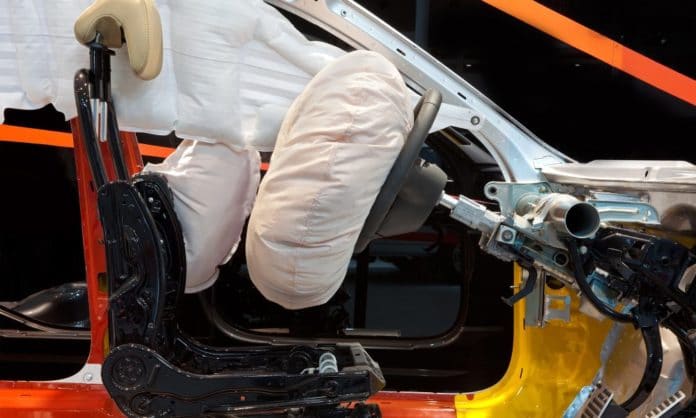Airbags were put in cars to protect people from getting hurt in a crash. Because of this, this article will explain how airbags came to be.

Airbag Experiments
In 1952, a retired American engineer named John W. Hetrick was in a small crash in a ditch. Hetrick and his wife raised their hands to keep their child from hitting his head on the dashboard. Everyone was safe. Hetrick was inspired by this small accident to put an airbag in the steering wheel, dashboard, and back of the front seat for the people in the back.
The whole idea was based on using compressed air to inflate the airbag when the spring-loaded weight senses a sudden decrease in speed. But he couldn’t finish his project because he didn’t have enough money.
Walter Linderer, a German inventor, also came up with an idea that was like Hetrick’s. His compressed air system was different because the airbag only went off when the bumper hit something. But in the 1960s, researchers found that this system took too long to fully inflate the airbags for safety.
Airbags Breakthrough
In 1967, mechanical engineer Allen Breed made a big step forward for airbags. He helped make it possible for airbags to have sensors that worked well enough for the auto industry to trust them. They were made to make the passenger feel at ease. Because of this, Mercedes-Benz decided to add airbags to their cars.
Government Support For Airbags

Accidents on American roads went up sharply in the 1960s. The government put its weight behind measures that were put in place to keep people safe on the roads, like putting airbags in all cars. General Motors, on the other hand, fought against this motion, saying that children could be killed by airbags.
Still, in 1973, General Motors gave in and did what the government told them to do. The Oldsmobile Toronado was the first car they made that had airbags. In 1991, the government passed a law that said all passenger cars had to be equipped with airbags. The government says that airbags saved 4,600 lives in car accidents in 1999.

